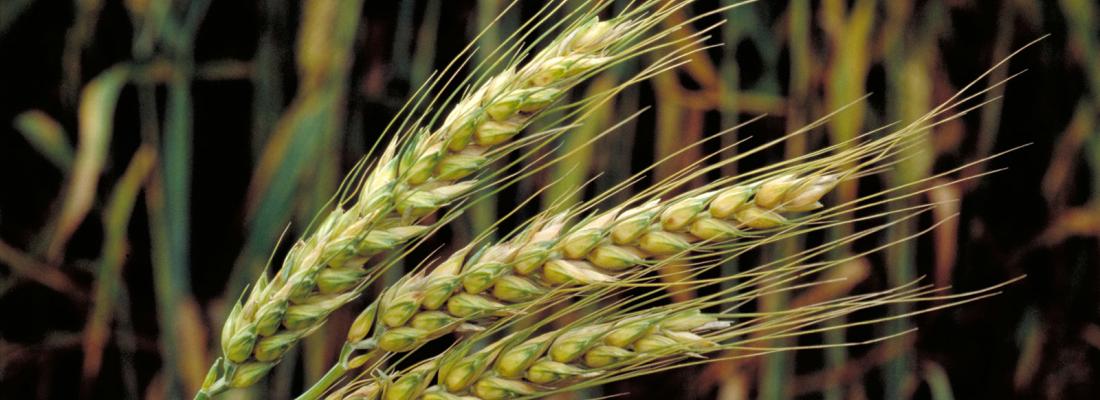Agroecology Reading time 2 min
Septoria tritici blotch in wheat: identification of a broad spectrum resistance gene
Published on 19 January 2021

*U.S. Department of Agriculture
Septoria tritici blotch caused by the fungus Zymoseptoria tritici and resulting in leaf necrosis is one of the main diseases affecting wheat crops throughout the world. In the most extreme cases, it can cause yield losses of up to 55%. At present, this disease is controlled mainly by the use of fungicides. The development of fungal resistance to phytosanitary products and the need to reduce the use of pesticides (directive of certain European Union countries to reduce the use of pesticides by 50%) to develop sustainable agriculture, mean that the research community has been working on various alternatives such as biocontrol or the development of resistant varieties for several years. Likewise, plant breeders consider wheat resistance to STB as a high priority. An international research programme jointly led by INRAE and Florimond-Desprez in partnership with the University of Wageningen and the USDA began in 2012 with the aim of identifying and studying the major STB resistance gene, Stb16q.
Broad spectrum resistance gene to Zymoseptoria tritici
Zymoseptoria tritici, the fungus responsible for STB in wheat, is a pathogen with a strong evolutionary potential. It is thus capable of developing resistance to fungicides and also of bypassing the defences present in certain wheat varieties. In addition, the small number of resistance genes known in wheat limits the selection of plants which present long-lasting resistance to this fungus. In 2018, the research team had already characterized a resistance gene to STB in common wheat, Stb6, which confers resistance against part of the population of this fungus (2018 press release). In this study, the researchers have identified and characterized a new resistance gene against the fungus: Stb16q.
This gene1 stops the development of the fungus from the onset of infection, when it enters plant tissue. The screening2 of 805 cultivated and wild varieties of wheat from very diverse origins shows that the Stb16q gene is only found in 6 varieties. The pathogenic fungus has received very little exposure to Stb16q, so it has not had time to develop resistance.
The team has also concurrently developed diagnostic markers which are available to breeders to monitor this gene throughout the different stages of wheat breeding programmes. Recently introduced in cultivated wheat varieties, this gene considerably slows down the penetration and development of the fungus in plant tissues. However, the introduction of this resistance gene into wheat varieties must be carried out with caution and combined with other STB resistances.
The identification and characterization of genes which confer resistance to diseases such as STB open up new perspectives for wheat breeding. The development of wheat varieties resistant to STB would make it possible, in association with other levers such as biocontrol, to reduce the use of pesticides in field crops and develop more sustainable forms of agriculture.
[1] This gene encodes a cysteine-rich receptor-like kinase (CRK) activity located on the plasma membrane of plant cells.
[2] Selection carried out within a population in order to isolate the individuals with specific traits.
|
Reference Cyrille Saintenac, Florence Cambon, Lamia Aouini, Els Verstappen, Seyed Mahmoud Tabib Ghaffary, Théo Poucet, William Marande, Hélène Berges, Steven Xu, Maëlle Jaouannet, Bruno Favery, Julien Alassimone, Andrea Sanchez-Vallet, Justin Faris, Gert Kema, Oliver Robert and Thierry Langin, A wheat cysteine-rich receptor-like kinase confers broad-spectrum resistance against Septoria tritici blotch, Nature Communications, DOI: 10.1038/s41467-020-20685-0 |
